文章目录
- 前言
- 一、遇到的问题
- 二、解决方案
- 三、重新编译安装
- 四、验证
- 五、资源自取
前言
本文记录在 GNU Radio+USRP 实现 OFDM 收发时,在接收端 QPSK 星座图映射无“抖动”问题的解决方法,
一、遇到的问题
我遇到的问题是,现在搭建的 OFDM 模型在接收端做信道均衡时,接收端的 QPSK 星座图映射在有噪声的情形下并没有出现 “抖动” 现象。如下图所示,可以看到 OFDM 头和负载的 BSPK 和 QPSK 都是比较规则的。
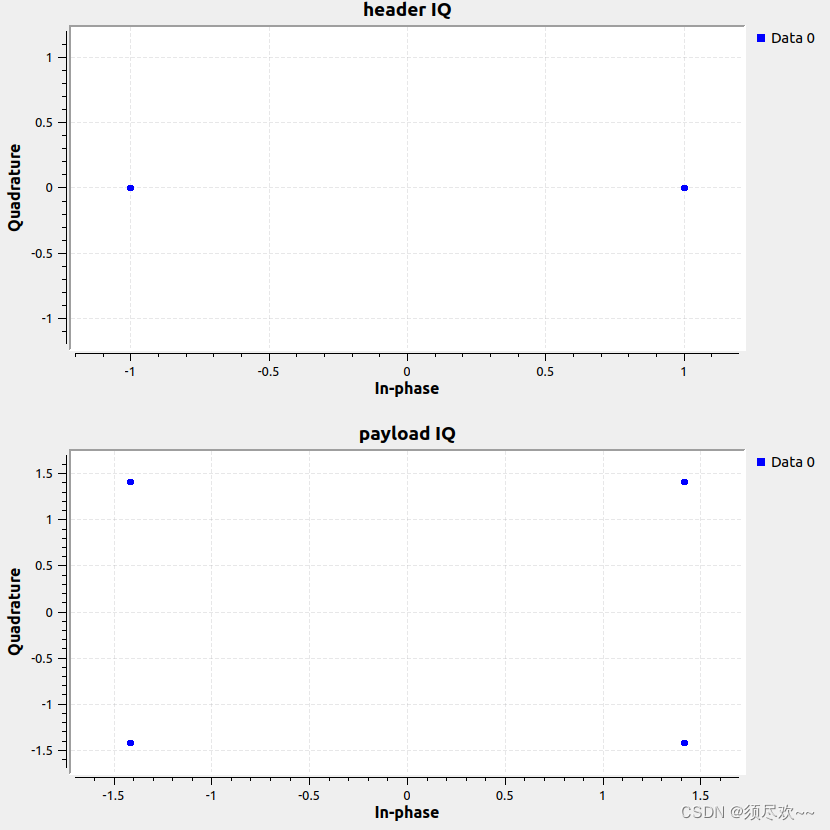
经过初步的分析,问题应当是出在了接收端的 “信道均衡模块” (OFDM Frame Equalizer Module), 这个模块不仅仅进行了信道估计和信道均衡,同时进行了最小距离分析并把含有噪声的点强行 “拉回” 星座图上的标准映射点。这个与我们一般意义下理解的“信道均衡” 是不同的,一般不会“拉回去” 。所以,现在的任务就是找出与 equalizer 相关的 .h 和 .cc 文件,阅读源代码,并对源代码进行修改。
二、解决方案
在 gnuradio/gr-digital/include/gnuradio/digital/ 文件夹下找到了所有与 equalizer 有关的 .h 文件
在 gnuradio/gr-digital/lib/ 文件夹下找到了所有上述.h 文件对应的.cc 源文件
最后直接定位到 ofdm_equalizer_simpledfe.cc
其源文件完整源码如下:
/* -*- c++ -*- */
/* Copyright 2012 Free Software Foundation, Inc.** This file is part of GNU Radio** GNU Radio is free software; you can redistribute it and/or modify* it under the terms of the GNU General Public License as published by* the Free Software Foundation; either version 3, or (at your option)* any later version.** GNU Radio is distributed in the hope that it will be useful,* but WITHOUT ANY WARRANTY; without even the implied warranty of* MERCHANTABILITY or FITNESS FOR A PARTICULAR PURPOSE. See the* GNU General Public License for more details.** You should have received a copy of the GNU General Public License* along with GNU Radio; see the file COPYING. If not, write to* the Free Software Foundation, Inc., 51 Franklin Street,* Boston, MA 02110-1301, USA.*/#ifdef HAVE_CONFIG_H
#include "config.h"
#endif#include <gnuradio/digital/ofdm_equalizer_simpledfe.h>namespace gr {
namespace digital {ofdm_equalizer_simpledfe::sptr
ofdm_equalizer_simpledfe::make(int fft_len,const gr::digital::constellation_sptr& constellation,const std::vector<std::vector<int>>& occupied_carriers,const std::vector<std::vector<int>>& pilot_carriers,const std::vector<std::vector<gr_complex>>& pilot_symbols,int symbols_skipped,float alpha,bool input_is_shifted)
{return ofdm_equalizer_simpledfe::sptr(new ofdm_equalizer_simpledfe(fft_len,constellation,occupied_carriers,pilot_carriers,pilot_symbols,symbols_skipped,alpha,input_is_shifted));
}ofdm_equalizer_simpledfe::ofdm_equalizer_simpledfe(int fft_len,const gr::digital::constellation_sptr& constellation,const std::vector<std::vector<int>>& occupied_carriers,const std::vector<std::vector<int>>& pilot_carriers,const std::vector<std::vector<gr_complex>>& pilot_symbols,int symbols_skipped,float alpha,bool input_is_shifted): ofdm_equalizer_1d_pilots(fft_len,occupied_carriers,pilot_carriers,pilot_symbols,symbols_skipped,input_is_shifted),d_constellation(constellation),d_alpha(alpha)
{
}ofdm_equalizer_simpledfe::~ofdm_equalizer_simpledfe() {}void ofdm_equalizer_simpledfe::equalize(gr_complex* frame,int n_sym,const std::vector<gr_complex>& initial_taps,const std::vector<tag_t>& tags)
{if (!initial_taps.empty()) {d_channel_state = initial_taps;}gr_complex sym_eq, sym_est;for (int i = 0; i < n_sym; i++) {for (int k = 0; k < d_fft_len; k++) {if (!d_occupied_carriers[k]) {continue;}if (!d_pilot_carriers.empty() && d_pilot_carriers[d_pilot_carr_set][k]) {d_channel_state[k] = d_alpha * d_channel_state[k] +(1 - d_alpha) * frame[i * d_fft_len + k] /d_pilot_symbols[d_pilot_carr_set][k];frame[i * d_fft_len + k] = d_pilot_symbols[d_pilot_carr_set][k];} else {sym_eq = frame[i * d_fft_len + k] / d_channel_state[k];// The `map_to_points` function will treat `sym_est` as an array// pointer. This call is "safe" because `map_to_points` is limited// by the dimensionality of the constellation. This class calls the// `constellation` class default constructor, which initializes the// dimensionality value to `1`. Thus, Only the single `gr_complex`// value will be dereferenced.d_constellation->map_to_points(d_constellation->decision_maker(&sym_eq),&sym_est);d_channel_state[k] = d_alpha * d_channel_state[k] +(1 - d_alpha) * frame[i * d_fft_len + k] / sym_est;frame[i * d_fft_len + k] = sym_est;}}if (!d_pilot_carriers.empty()) {d_pilot_carr_set = (d_pilot_carr_set + 1) % d_pilot_carriers.size();}}
}} /* namespace digital */
} /* namespace gr */
我们需要对其进行修改,有关其修改内容及解决办法已放到文末,有需求的通信爱好者可以自取。
三、重新编译安装
首先进入安装的时候的 gnuradio 文件夹下,之后进入 build 文件夹下,在这个文件夹下开启 terminal
之后在 terminal 中输入下面命令:
cd workarea/gnuradio/buildcmake -DCMAKE_BUILD_TYPE=Release -DPYTHON_EXECUTABLE=/usr/bin/python3 ../
make -j4
sudo make install
sudo ldconfig
四、验证
打开 OFDM 工程,运行可以看到下面界面:
1、发端效果图:
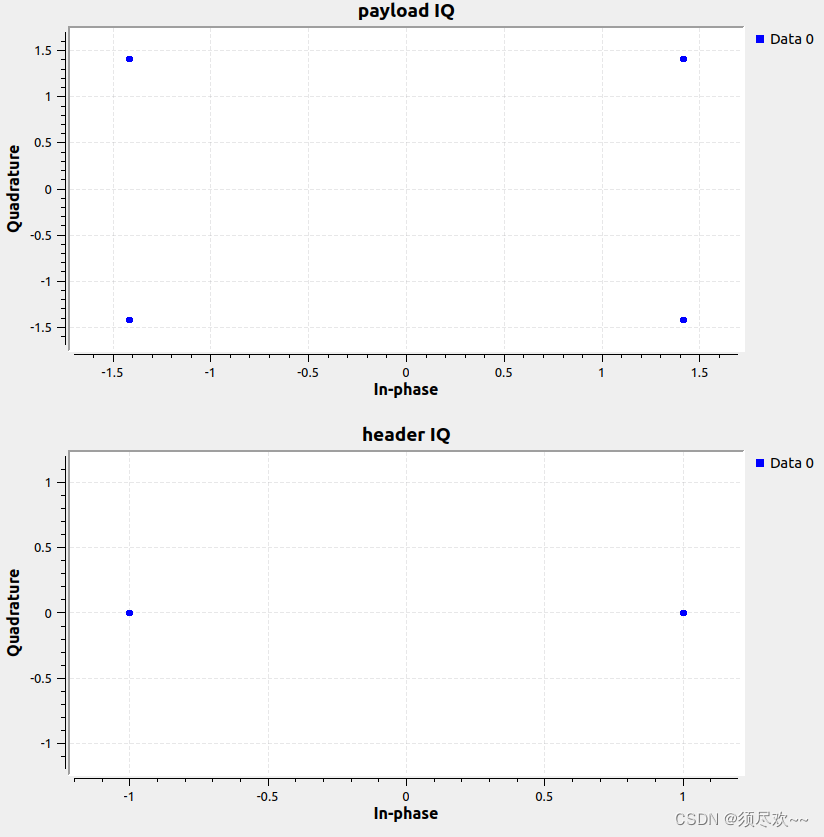
2、收端效果图
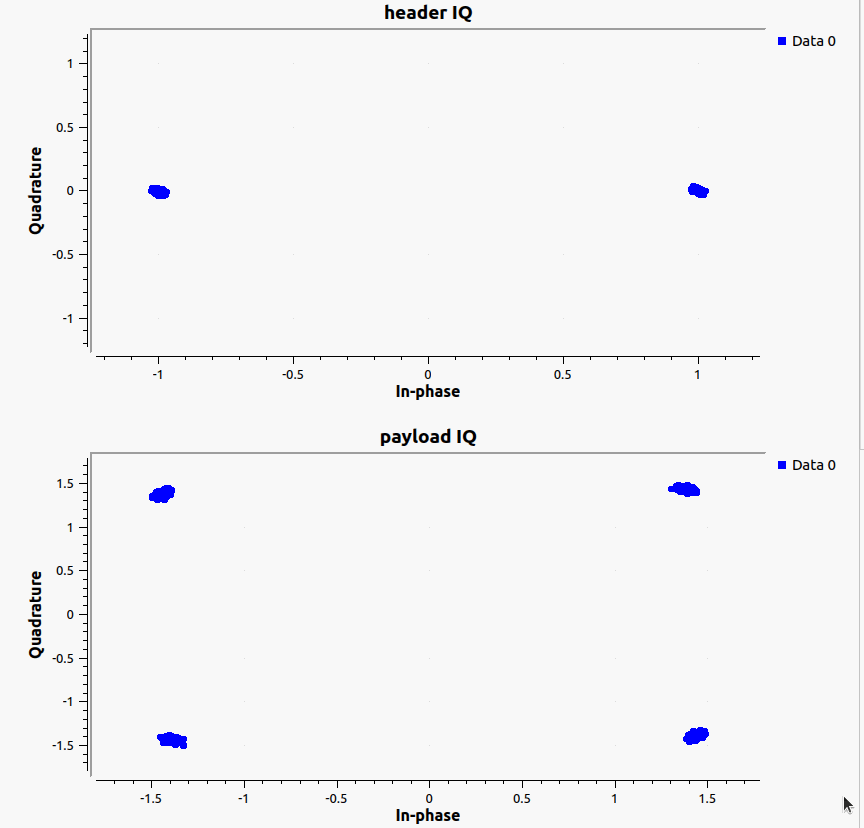
可以看到目前属于正常的状态
五、资源自取
链接:解决GNU Radio+USRP实现OFDM收发在接收端QPSK星座图映射无“抖动”问题
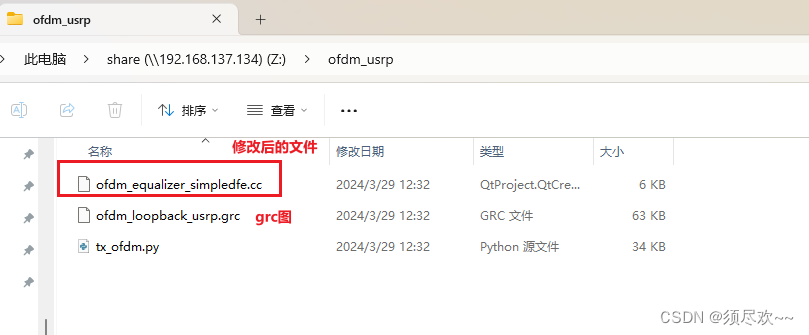
我的qq:2442391036,欢迎交流!
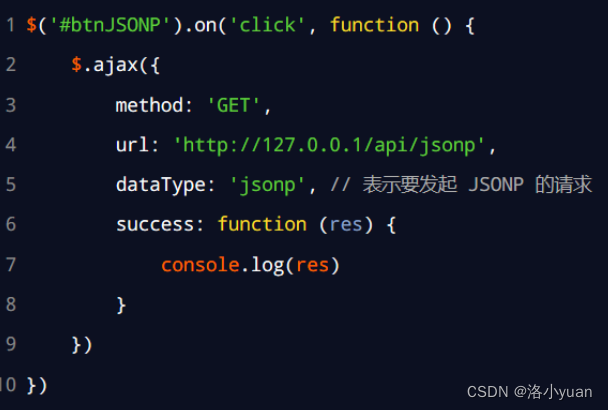




![[flink 实时流基础] flink组件栈以及任务执行与资源划分](https://img-blog.csdnimg.cn/img_convert/ea5ddc3582cd097dd41eaeefff4c3d32.png)